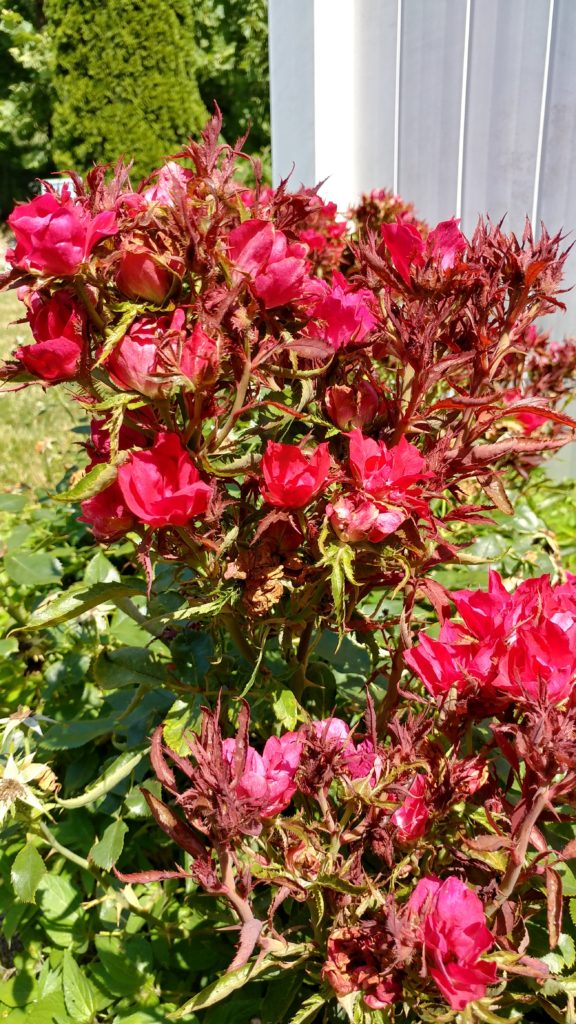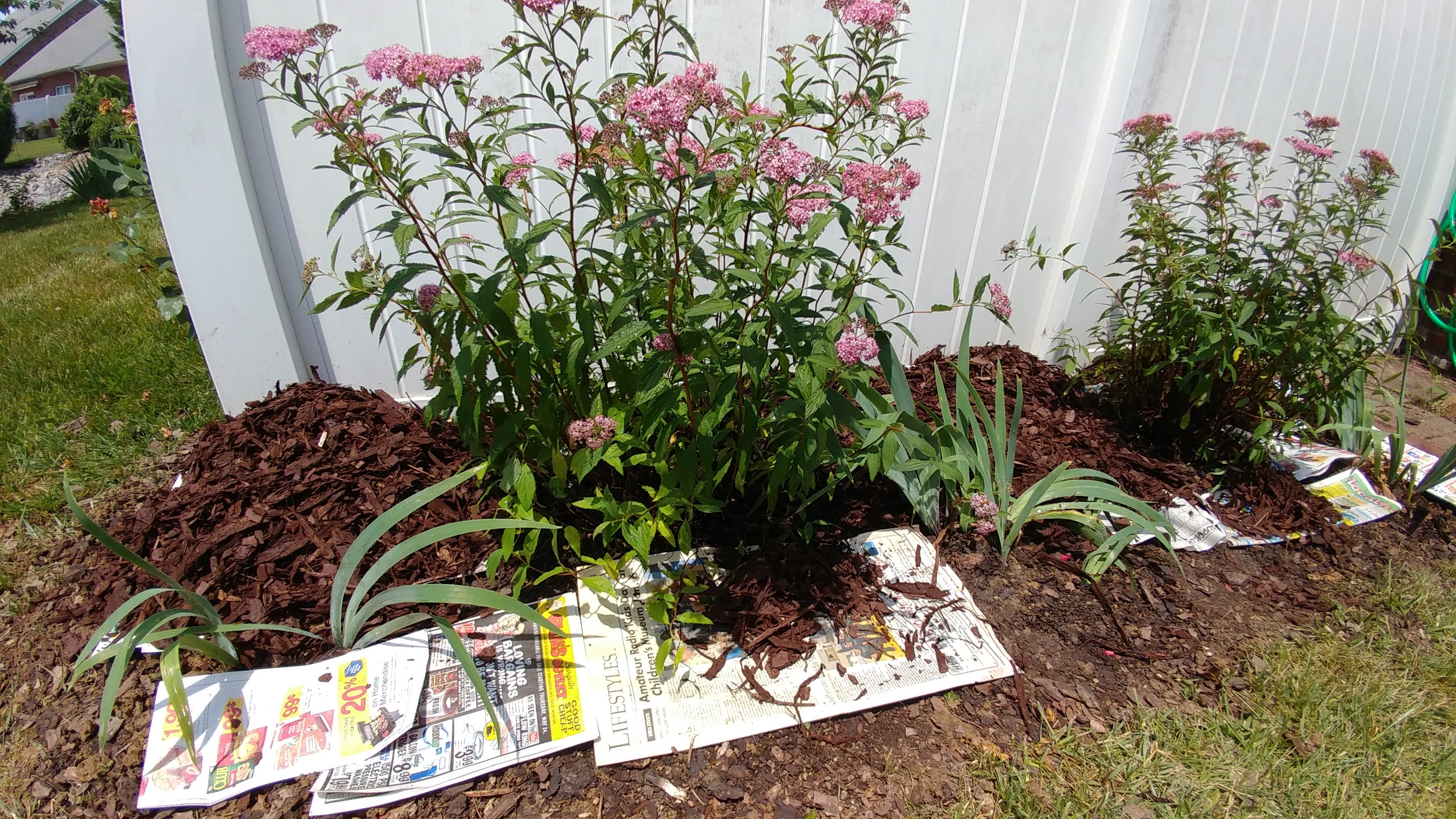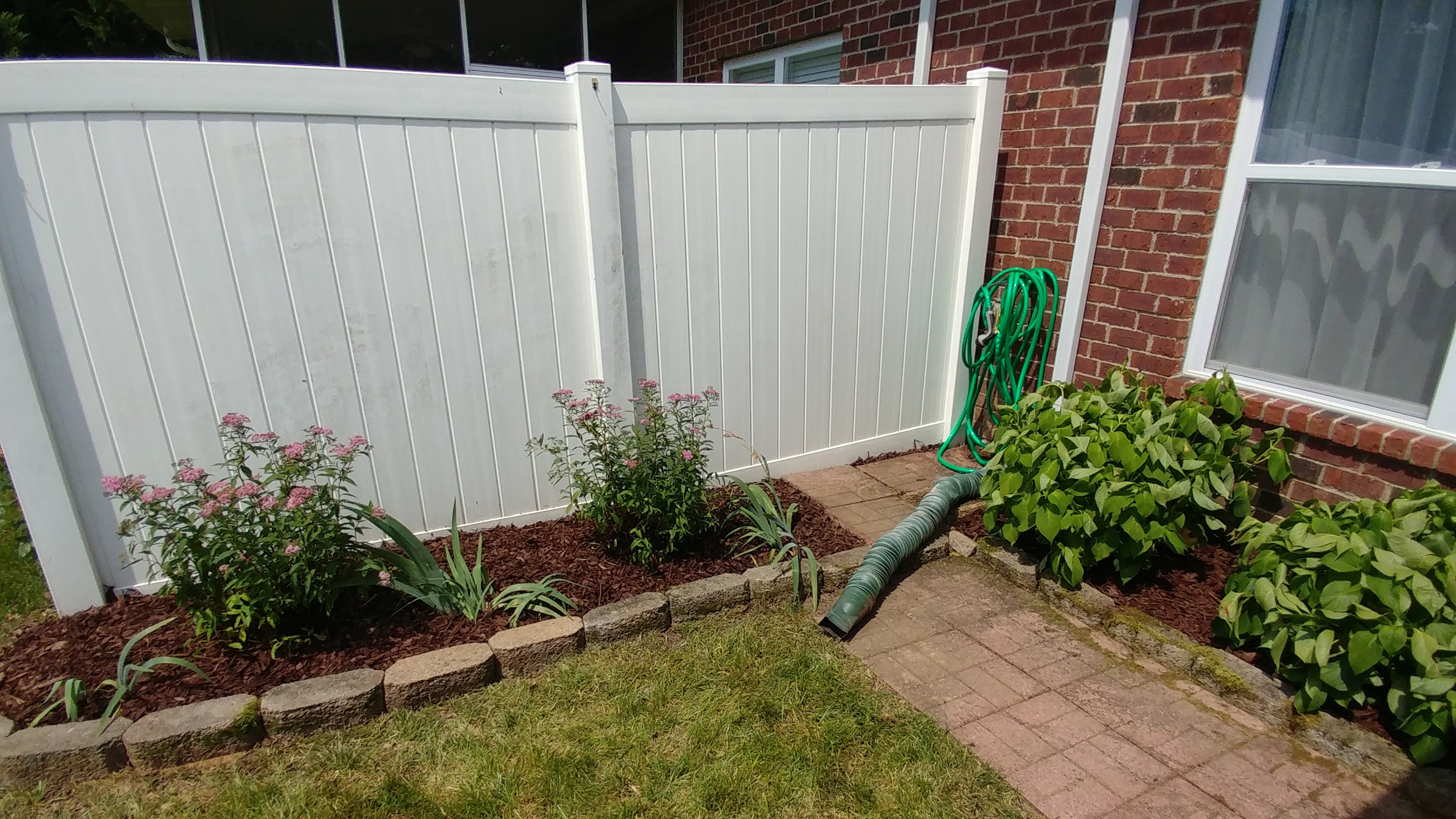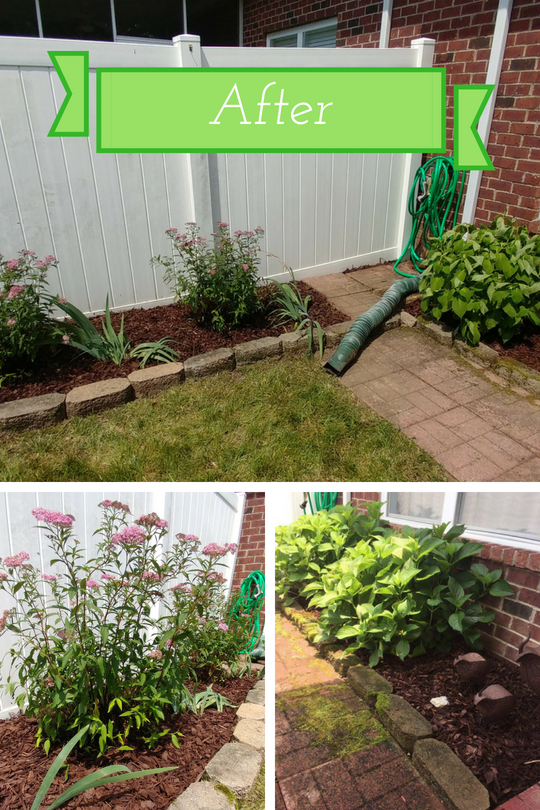I posted on Facebook a couple weeks ago about my visit to Linda Vater’s garden in Oklahoma City, and my friend Meri responded that she had some beds in the back of her house that needed some updating and that “the weeds are bigger than the plants.” We got to talking and decided that this would be a good mini project that I could write about on the blog.
When I first looked at the picture of the roses, I knew that they had the exact same problem mine did – Rose Rosette disease. What you see in the following picture is called witch’s broom. The new growth is deep red, super thorny, shoots up quickly, and the leaves and flowers are deformed. Unfortunately, when this happens to your rose bush, there isn’t anything you can do to save it. And when it is planted close to other rose bushes, the eriophyid mites jump onto those and infects them too.

Thus, all the rose bushes were goners. I brought my husband Paul along to help, so he dug up all five of the rose bushes. That should tell you something about the appropriateness of the previous plantings. Knockout roses are pretty compact when you buy them, but they quickly grow large. As I’ve mentioned before, actually read the tags that come with the plant. They tell you how tall and wide the plant gets in maturity as well as how much space you should leave between plants, amongst other things. When choosing new plants for the space, we made sure to give them room to grow based on the specifications on the tag.
Weeds were taking over the rest of the bed, so I pulled all those up. They came up pretty easily! In the other bed, we wanted to keep the hydrangeas, but not the monster weeds. Luckily the weeds came up just as easily in that bed. Then, there were some irises that weren’t getting enough light in that bed, so I transplanted them to the bed that got more sun. Once all the weeds were gone, it was time to shop for some new plants for the bed where the roses were. Prior to going over there, I looked up some alternatives to rose bushes that would provide year-round foliage, but would have a similar color. I found the spiraea and its various cultivars. When we all went to Lowe’s, she too liked the look and color of the spiraea. Great minds!

Meri bought three plants, but we saw when we got back that two would be plenty. They need room to grow! For weed barrier, I lay down newspapers, and then mulch on top of it. Newspapers are more cost effective than landscape fabric, are biodegradable, and are easier to work with. I can’t tell you how many houses I see have used the landscape fabric and what do you know? There are weeds. Weeds grow in soil, and when a few leaves fall, break down, and become soil, the weeds make themselves at home. In addition, if you ever want to change the plants, you have to worry about taking up and putting back down the landscape fabric. Mini rant over.
At the end of the day, small changes make a big difference. What are some easy, cost effective ways to make a big impact in your landscaping? Rearrange existing plants to better fit the space and the light conditions. Buy plants that suit the space, with maturity in mind when planting (and that aren’t super prone to disease). MULCH! Mulch makes such a big difference in the appearance of landscaped beds. Lastly, edging is that final touch that gives flower beds a professional look. Whether you use some brick of stone edging or you edge with and edger to create a small gap between the grass and the flower bed, it surprisingly makes a big difference.
Well, that’s all she wrote. What do you think of the transformations? How do you create and maintain flower beds in front and back yards? I would love to hear from you!



